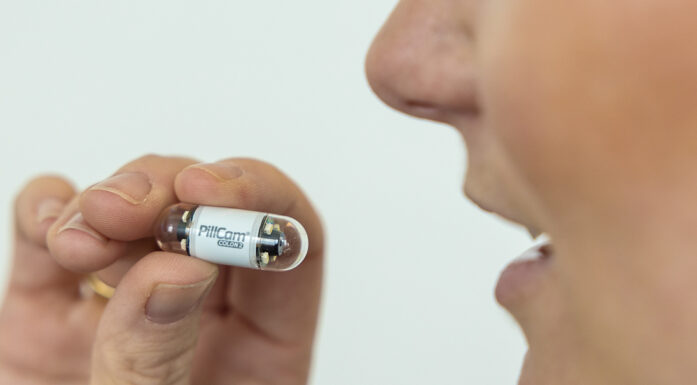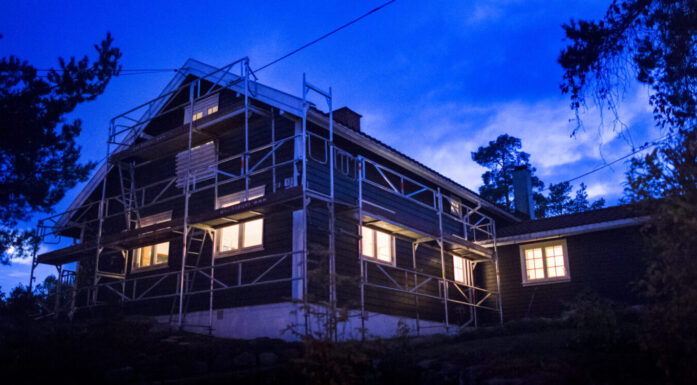Winter salting caused the crash – not the steel
Speciality steels made the headlines in 2021 following a serious car accident. Normally, alloys of this type corrode very slowly, but they must not be used to construct barriers along roads that are salted in winter. At other places on the road network, the same steels offer long lifetimes and cost savings.
The use of so-called ‘weathering’ or ‘corten’ steel in crash barriers has been debated in the media on several occasions. The latest was in a recent article in the technology magazine Teknisk Ukeblad. The reason for this attention was a serious car accident that took place along the E6 highway north of Andelva in the county of Viken in 2021. A car was impaled by a rusted and weakened steel component that split when the car collided close to an emergency gap in the crash barrier.
As part of a contract research project for the Norwegian Public Roads Agency, SINTEF has investigated the corrosion properties of weathering steel as a basis for making recommendations about where it can, and cannot, be used.
Our main conclusion is that steel of this type cannot be used in locations close to seawater or along roads that are salted in winter. Moreover, steel constructions must be designed to ensure that they can thoroughly dry out on a regular basis. One of the problems with the crash barriers along the E6 at Andelva was the selection of a C-shaped profile that retained water and prevented thorough drying.
And then there are bridges
When the Tretten Bridge spanning the Gudbrandsdal river collapsed last autumn, a debate arose concerning the use of weathering steel in bridge construction. The bridge was constructed using a combination of weathering steel and laminated timber. Examination of the steel following the collapse revealed no sign of accelerated rates of corrosion.
The steel functioned as it was supposed to, and the use of weathering steel was not the cause of the collapse.
As part of our own investigation, we have investigated a footbridge that crosses the E6 at Espa, east of Lake Mjøsa. The bridge is constructed using weathering steel. But nor does this bridge show any signs of advanced corrosion. Nor does it appear that road salt is reaching very high above the road surface, and we have every reason to believe that this bridge will achieve its intended lifetime.
What is weathering steel?
The Public Roads Agency started to use weathering steel in about 2010. The material was used extensively in the construction of crossing bridges and road equipment, such as crash barriers and signage poles, along the stretch of the E6 from Dal to Kolomoen, Hindsight has now revealed that this was a poor choice when it came to crash barriers, although this does not mean that the material is universally unsuitable for this purpose.
‘Weathering steel’ is a collective term for a number of steel alloys that typically contain from 0.5 to 1 percent chromium and between 0.3 and 0.5 percent copper.
All rust that develops on steel protects the material to some extent and reduces the rate of corrosion. Old, rusted steel thus exhibits a slower rate of corrosion than new, unrusted steel.
Weathering steel was developed with the aim of reinforcing this effect, enabling steel constructions to be built without any additional corrosion protection. The addition of chromium and copper causes the rust to be more densely packed, which offers greater protection than normal rust. Rates of corrosion can be so low that less than one millimetre of the metal will be lost over a 100-year period.
The benefits of weathering steel
The low rates of corrosion associated with weathering steel can offer major savings in road equipment and bridge construction costs, because such steels are anticipated to have lifetimes typically from 50 to 100 years.
The alternative is to use a standard steel treated with some form of protective coating. Zinc and paint coatings are the most common protective surface treatments and were used in connection with all steel bridges and road equipment before the adoption of weathering steel. In Norway, standard steels, protected by some form of coating, are still much more widely used than weathering steel.
The disadvantage of standard steels is that their protective coatings deteriorate over time and have to be reapplied. In the case of a bridge with a 100-year lifetime, maintenance of the coating alone will be necessary at least once during this period. Such maintenance may cost as much as several millions and cause major disturbance to traffic flow.
It is thus a major advantage if such maintenance can be avoided, and the use of weathering steel offers an attractive alternative. The addition of just one millimetre of protective rust will enable a construction to achieve its 100-year lifetime without any maintenance.
Limitations to the use of weathering steel
There are two key limitations to the use of weathering steel. The first is that it is critical that the surface be allowed to dry thoroughly at regular intervals in order to ensure the development of a dense and protective layer of rust. Rust is composed of different types of iron oxide. Some types offer little or no corrosion protection because they are loose and porous and not firmly attached to the surface of the steel. Others offer good protection because they are densely packed and remain fixed to the steel.
However, as long as the steel surface is allowed to dry out thoroughly at regular intervals, the weakly-protective rust will gradually transition to the densely-packed protective form.
The other limitation is that weathering steel cannot withstand the effects of salt. Chloride causes the formation of flake-like rust particles that fall from the surface of the steel instead of forming a dense, protective layer. For this reason, weathering steel cannot be used in locations where sea salt can reach the construction.
In fact, winter salting was the cause of an accident along the E6. Heavy traffic travelling at high speeds caused salty water to be whirled up and spread all around the road. The median barrier and those along the side of the road were exposed to the highest concentrations of salt, which were far above those that weathering steel is designed to withstand.
The correct use of weathering steel
From the point of view of the Norwegian Public Roads Agency, weathering steel represents an economically beneficial alternative because it requires no surface treatment and thus also no surface maintenance. In the context of a 100-year construction lifetime, this represents significant cost savings.
The agency is now fully aware of the limitations associated with salt and design issues, and weathering steels will probably be used more widely in the years ahead. However, in order to ensure that it is utilised correctly, the agency now requires that all use is approved in advance.
This article was first published in the technology magazine Teknisk Ukeblad on 25 April 2023, and is reproduced here with permission of the magazine.





